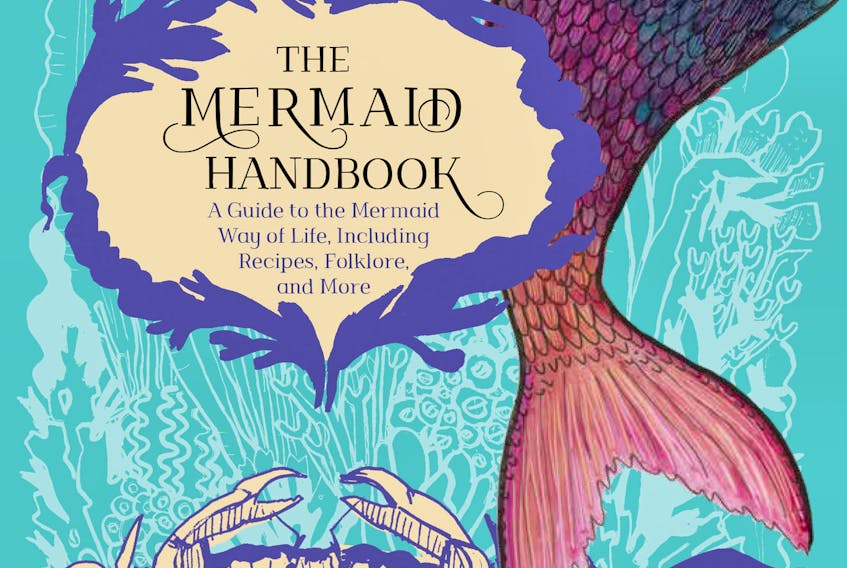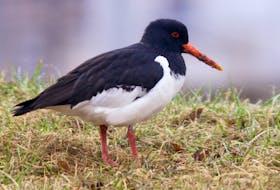Whether you want to make a fresh seaweed salad with local ingredients or a warm apple pie using an heirloom recipe, two new books highlighting vastly different Nova Scotian foods, will not only help you, but inspire you in the process.
“One of the main threads that tie generations together is food. Recipes handed down through a family are a form of time travel — you can imagine a great-great-grandmother tasting the very same flavours as you eat a forkful of home-baked apple pie,” Alice Burdick writes in the introduction to Grandma’s Cookies, Cakes, Pies and Sweets: the Best of Canada’s East Coast (Formac Publishing). The beautiful photographs in the book were taken by Callen Singer.
The book’s recipes were originally published in 1967 in A Treasury of Nova Scotia Heirloom Recipes, a centennial project of Nova Scotia’s Department of Agriculture and Marketing. Collected from books dating as far back as the 1870s, many of the recipes came from old family cookbooks and notebooks. Burdick, a baker, published poet and co-founder of Lunenburg’s Lexicon Books revised and tested all the recipes, trying to make them more appealing, while still keeping their essence and time-honoured traditions.

“Treasured family recipes are a combination of intuition and experience, and you can really see that with older, heirloom recipes, where often whole steps aren’t mentioned. There’s an assumption that the person reading the recipes is using them as a guide, but already knows the steps,” writes Burdick. “When updating the recipes, I often had to add ingredients, steps and tips that had been left out — the modifications that are made over time, passed on through shared experiences, but aren’t written down.”
Connecting with the past and being delighted by the aromas and flavours we associate with our ancestors' kitchens, whether it is the smell of molasses, lemons, apples or fresh berries, are some of the reasons why we continue to bake using traditional recipes, she says.
Grandma’s Cookies, Cakes, Pies and Sweets is divided into chapters: cookies, cakes, pies, desserts, candies and sweet sauces.
“Nova Scotian desserts are an interesting mix of French, British and Northern European origins, but there are also distinctly Indigenous contributions, particularly when it comes to the use of fresh wild fruit and berries, squash and maple syrup,” Burdick writes.
Mermaid Handbook
Taylor Widrig takes readers outside the kitchen and into the ocean in her book, The Mermaid Handbook: A Guide to the Mermaid Way of Life, Including Recipes, Folklore, and More (Nimbus Publishing). Widrig, who grew up on the South Shore and attended Lunenburg Academy, aims her book at young readers, giving them a glimpse into the mythical and more practical lives of modern-day mermaids. The book covers everything from mermaid history and folklore, including the story of Minnow, the Mi’kmaw mermaid who swum in and around the Bay of Fundy, to tips on protecting the ocean, to more than 40 healthy and easy-to-make recipes using seaweed. The book’s pages are filled with artwork by Briana Corr Scott, a Nova Scotia painter and illustrator.

“The message that the Mermaid Handbook delivers today I hope adds value to the crisis our world faces, a reminder to be kind to one another and look to what is truly valuable to us as humans which is each other and the planet we live on,” said Widrig during a recent interview.
With her long, straight blonde hair, love of sea vegetables and all things surrounding the ocean, Widrig is sometimes asked if she is a mermaid.
“I have a deep relationship with the ocean – it is what I have known my entire life,” she said. “Today, I try to visit the ocean at least once a day when I am near it,” she added.
Widrig’s father was a fisherman and as a child she and her family explored islands around Mahone Bay and the rest of the South Shore on their Boston Whaler. She loved to swim and dig for clams and later learned to sail. She has crossed the Atlantic twice and for seven years worked as a cook on private yachts.
Wanting to learn more about raw foods, she took culinary training in New York City and in California. She returned to Nova Scotia and started developing her own recipes. In her book, she includes Ningyo (a Japanese mermaid) kaiso seaweed salad, DLTs (dulse, lettuce, and tomato sandwich) and creamy wakame casserole topped with gomasio (a traditional Japanese seasoning), as well as healthy snacks like smoothie bowls and energy bites. There are also body products like mermaid bath salts and five soup recipes.
“I love soups, hot and cold and eat them almost every day,” she said. “My favourite in the book is the pearl gazpacho, which is a green version of tomato-based gazpacho and uses almonds.”
When she’s not writing or developing new recipes, Widrig runs Mermaid Fare, a company she started that develops food and cosmetic products using sea vegetables. The company also works on international development projects in places like East Africa, to increase seaweed supply chains and help rural-coastal communities.
“I hope this book makes you feel good about making lifestyle choices that support the health and well-being not only of yourself, but also of Mother Earth. After all, Mother Earth is a part of each of us, mermaids and humans alike,” she writes.
Long list
Two Nova Scotian writers have their books on the longlist for the 2020 Scotiabank Giller Prize.
Lynn Coady, for her novel, Watching You Without Me (House of Anansi Press) and Francesca Ekwuyasi, for her novel, Butter Honey Pig Bread (Arsenal Pulp Press).
The two books were chosen from 118 books submitted by publishers across Canada. The prize’s winner will be announced on Nov. 9.
New in poetry
David Huebert’s new book of poetry, Humanimus (Palimpsest Press) looks at animals, humans, toxicity, and compromised ecology.
Huebert’s work has won the CBC Short Story Prize and the Walrus Poetry Prize. His fiction debut, Peninsula Sinking, won the Jim Connors Dartmouth Book Award. Huebert is currently Writer-in-Residence at the University of New Brunswick.
Nova Scotia home
In her new book, Where’s Home?: In Nova Scotia the Answer Can be Complicated (Moose House Publications), Lunenburg County writer and artist Jan Fancy Hull explores what makes Nova Scotia feel like home, and what sometimes blocks that sense of home. Using an online survey, as well as interviews to gather information, Fancy Hull found that the answer wasn’t always simple.
Orphan returns
Author Randall James has released a sequel to his popular Cape Breton Orphan: A Memoir. In Cape Breton Orphan Returns, he brings readers more insights and more stories from his life.
In his debut book, James tore open his life, taking readers on a bumpy ride through his childhood and adult life. Calling it a candid account of one man's struggle, growth and transformation, James wanted to share with readers the meaning he found beneath life’s hardships.
Blacksmithing
Amateur blacksmith Frank M. Smith hopes his first book, What Once Was Lost (SSP Publications), brings readers an appreciation for the old craft of blacksmithing.
What Once Was Lost uncovers Nova Scotia’s rich history of blacksmithing which began in 1605 at the Port Royal Habitation, where the first known blacksmith shop in the province was located. Smith shows how the trade has adapted from the 18th century to today.
The book, which includes pictures, also profiles 14 blacksmiths working in Nova Scotia. Each one explains how they’ve adapted their traditional skills to make modern creations.









